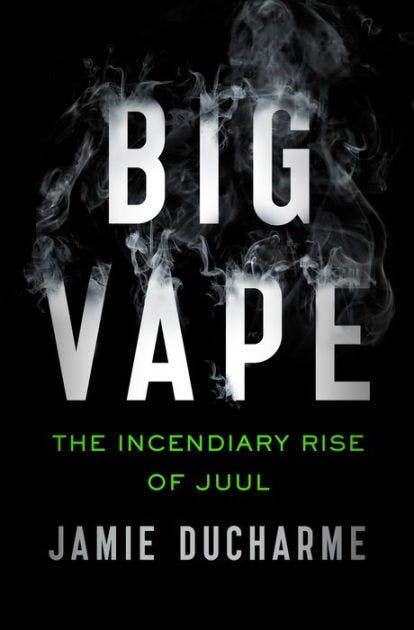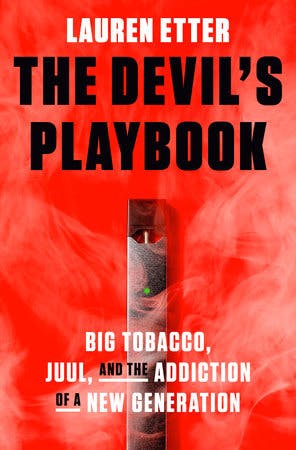In April 1994, the heads of the biggest tobacco companies testified before Congress that cigarettes weren’t addictive. A month later, across the country, a box marked “confidential” arrived for Dr. Stanton Glantz, a longtime foe of Big Tobacco and a professor of medicine at the University of California San Francisco. The sender signed his name “Mr. Butts,” an allusion to a Doonesbury character. When Glantz opened the package, he found thousands of internal documents from British American Tobacco and its then-subsidiary, Brown & Williamson. The paperwork detailed scientific research, public relations strategies, and corporate communications about everything from downplaying the harms of cigarettes to appealing to the next generation of smokers. In a fury, Glantz began photocopying the pages and copied them onto CDs. It would only be the beginning.
In 1998, the four largest tobacco companies in the U.S.—Philip Morris, R.J. Reynolds, Brown & Williamson, and Lorillard—entered the Tobacco Master Settlement Agreement with 46 attorneys general, requiring the industry to shell out hundreds of billions of dollars in perpetuity so states could grapple with climbing medical costs associated with smoking-related illnesses. The deal also imposed stringent advertising restrictions on the tobacco companies and created and funded what became the Truth Initiative, a tobacco-control nonprofit that would go on to spearhead countless youth prevention campaigns. But more importantly for Glantz, it forced the industry to release even more of its inside communications. He got hold of those, too.
With all this evidence in hand, Glantz and UCSF uploaded what became known as the “Truth Tobacco Industry Documents” onto the internet in the early 2000s. The university created a digital archive of 14 million documents meant to give transparency to what was then probably the most deceptive and deceitful industry in the United States.

Two new books published on the same day this month—Big Vape: The Incendiary Rise of Juul, by Time’s Jamie Ducharme, and The Devil’s Playbook: Big Tobacco, Juul, and the Addiction of a New Generation, by Bloomberg’s Lauren Etter—each relay this tale and what has happened to the nicotine industry in the decade or so since, which now almost wholly revolves around the question of whether the rise in vaping is a salutary corrective or not.
Years after the UCSF upload, James Monsees and Adam Bowen, two students of Stanford’s graduate program in design, stumbled on the trove. They had a thesis project to finish: pitching a device that would deliver nicotine in a safer way than smoking. They pored over the information, researching how the tobacco companies had long attempted to sell lower-risk alternatives to combustible cigarettes. They had blueprints—like devices from R.J. Reynolds and Philip Morris that heated tobacco instead of burning it—right in front of them.

After graduation, Monsees and Bowen would turn their thesis project into a reality. In its earliest conception, Ploom, as the device was initially called, would heat small pods of tobacco through a liquid fuel source, butane, producing a nicotine aerosol that could be inhaled. With some initial investment from Silicon Valley, the pair wanted to add legitimacy to their startup endeavor by partnering with someone who had a reputation in public health. They approached Glantz, who, admittedly intrigued, said that he issued them a dire warning: The new device would be appealing to kids. They never received his support.
This is an episode Ducharme and Etter linger on, the moment the notorious history of Big Tobacco slammed into the present of well-financed and breakneck technology. Without the tobacco industry documents Glantz publicized, there’s good reason to speculate that Monsees and Bowen wouldn’t have been able to transform Ploom into what we now know as Juul—one of many e-cigarettes on the market that countless health authorities have stated are significantly less harmful than traditional cigarettes.
If Monsees and Bowen were reckless, Juul is not a Theranos-level con, no matter how much the publishers of these books wish it were. The story of Juul particularly and vaping more broadly is much more complex than what has dominated the news cycle.
It’s likely that Monsees and Bowen introduced the most effective harm-reduction tool of all time by achieving what Big Tobacco never could; it’s also true they set off a chain of events, whether through negligence or avarice or some combination, that led teens to their product and put them in the crosshairs of a long fight between the government and the tobacco industry.
As Juul helped propel vaping into the mainstream, the company collected billions of dollars and, in the process, arrived at the center of a debate that had previously been reserved to the tiny circle of tobacco control. Broadly, it’s referred to as the “tobacco endgame.” The premise is simple: Do we strive to achieve a nicotine-free society, in all its forms, or do we move toward a safer and more sustainable nicotine future? This is the question that hovers over Ducharme’s and Etter’s books, even if it’s not always addressed head-on.
In general, there are now two distinct approaches to the issue. The first is a prohibition-focused strategy that involves the banning of vaping products, especially flavored ones, because they’re enticing kids to use nicotine. It’s the next battleground against Big Tobacco. The second advocates embracing e-cigarettes as substitutes for cigarettes, a way to switch current adult smokers to less dangerous choices. This perspective, ironically and unfortunately, is shared by the very industry that caused so much death and devastation in the first place.
The former group includes prominent public health organizations like the American Heart Association, the Michael Bloomberg–funded Campaign for Tobacco-Free Kids, wealthy parents with political clout, and a majority of American lawmakers; the latter is comprised of a motley crew of very online libertarians, passionate consumer advocates, tax reformists like Grover Norquist, drug war critics, an increasing number of tobacco-control outliers, the tobacco and vaping industries, and Joe Nocera.
For a minute, before youth vaping rates ruined his tenure at the Food and Drug Administration, Commissioner Scott Gottlieb even saw tobacco products on a “continuum of risk” and accepted the potential of e-cigarettes in reducing the harms from cigarettes if people switched. They had been so promising to him that his agency, which had been given power over tobacco products in 2009, waited years to formally begin the process of regulating the thousands of vaping devices on the market. Only in September 2020 did vaping companies have to submit applications for authorization, after more than a decade of niche trade shows and unencumbered innovation. This official stamp is Juul’s sole focus now.
Both Ducharme’s and Etter’s narratives are fair and well researched, despite being limited assessments. Ducharme zooms in squarely on the inner workings of Juul, while Etter looks at how Altria, the parent company of Philip Morris and one of the largest cigarette producers on the planet, decided to spend $12.8 billion for a 35 percent stake in Juul. Ducharme charts how one poor decision by Juul after another coalesced in a legal and regulatory nightmare that left it no choice but to get involved with Big Tobacco; Etter cuts back and forth between the ascent of Monsees and Bowen and the aggressive desire of Howard Willard, then Altria’s CEO, to enter the lucrative vaping market at all costs. Along the way, Etter also follows a collection of well-off parents in the Bay Area who worry their children have succumbed to the throes of nicotine.
Juul’s fast-paced legend is inextricably tied to the actions Monsees and Bowen took that contradicted what they’d later claim: that Juul was intended for current, of-age smokers in search of a better option. The optics definitely aren’t great. When Juul plastered a billboard in Times Square, who exactly was it targeting? When it threw a launch party in Manhattan attended by social media influencers, was that really meant as a celebration for adult smokers? And, perhaps worst of all, it built anti-vaping programs to be taught in schools. Was that a tactic borrowed from Big Tobacco of decades past, or was Juul really—honestly—just that naïve? (It was told by Cheryl Healton, the dean of New York University’s School of Global Public Health, not to do that.)
The very design and premise of the Juul has its detractors. The easy-to-charge portable device can be mistaken for a flash drive and delivers an atomized nicotine salt, for which Juul holds a patent. The hit from a Juul mirrors the immediate buzz of smoking a cigarette. A single pod can contain up to 59 milligrams of nicotine per milliliter, one of the higher amounts of nicotine in pod-based vapes on the U.S. market.* The obvious drawback of such a concentration is that a person who doesn’t use nicotine on a regular basis—say, a teenager—might become dependent on it. But studies have also suggested that vaping products with higher levels of nicotine seem more conducive to helping current smokers quit, because the immediate effects resemble those from a normal cigarette.
Some of the data is in Juul’s favor. Youth vaping rates steadily declined in 2020. A recent study has suggested that teens who vaped would have probably smoked cigarettes had vapes not been available. Track down any old-school adult vaper who prefers tinkering with their clunky open-system rigs, and they’ll tell you it’s a certain flavor that got them off the smokes for good. These testimonies carried some weight: Toward the end of 2019, the Trump administration settled on a partial ban on pod-based flavored vapes, leaving the open systems preferred by many adult vapers untouched. (Under enormous pressure, Juul discontinued all flavors—other than tobacco and menthol—before the Trump administration issued its sales moratorium.)
It’s easy to get lost in the whirlwind of Juul and its repeated lapses in judgment. But cigarette consumption is still the number one cause of preventable death on the planet, and smoking remains ubiquitous in low-to-middle-income countries, many of which have followed the lead of many states, cities, and towns in the U.S. and banned the sale of flavored vapes. Progress cannot be brushed away. There are also promising developments with heat-not-burn products, or HTPs, like Philip Morris’s IQOS, which, by heating the tobacco instead of burning it, releases fewer of the carcinogens typically inhaled while smoking. In Japan, where HTPs have become popular, cigarette sales decreased almost 43 percent in the past five years.
So do we deprive people in India and Mexico of safer alternatives to cigarettes? I say no. At the very least, it deserves an empathetic answer. Most politicians in the States, however, cannot see past the so-called youth vaping “epidemic.” They push for flavor bans and excise taxes that could render vaping obsolete. This is not the logic everywhere: In the United Kingdom, for example, there are vape shops attached to hospitals.
Ducharme is more understanding of Monsees and Bowen’s intentions and the unintended consequences—and a harm-reduction line of thinking—than her counterpart. She is also more willing to accept that we may have, partially, panicked. It’s the more nuanced assessment.
For example, in the summer of 2019, a string of then-mysterious vaping-related illnesses alarmed parents and lawmakers across the U.S. Articles started to appear in major newspapers about how teenagers, now using e-cigarettes at alarming rates, were ending up in hospitals with lung inflammation. The Centers for Disease Control and Prevention labeled the apparent outbreak “EVALI,” or “e-cigarette, or vaping, product use-associated lung injury.” By November, the CDC identified a “very strong culprit”: vitamin E acetate, an adulterant that had been found in illicit THC cartridges. But the damage had already been done, and as Ducharme notes, “to many observers, not only in the vaping industry but also in the research community, the CDC’s silence on the source of the EVALI outbreak seemed to extend beyond typical scientific caution.” And by putting “e-cigarette” in the name of the disease, when it almost definitely had nothing to do with vaping nicotine-laced e-liquid, the agency prompted such a scare that cigarette sales actually increased in the U.S. Etter does not make this sort of concession, stating that “there was likely more than one factor leading to EVALI” and siding with the incredible caution of the CDC.
Juul’s fate is currently up in the air. The company is now stocked with Altria executives awaiting approval from the FDA, which should come by the fall. Until the ruling arrives, the company can sell its tobacco and menthol pods. But what next? Has public perception soured too much already? Has our collective concern over teen vaping led us to ignore the lives of millions and millions of smokers in States and across the globe?
There’s a beautiful image toward the end of Etter’s Devil’s Playbook that captures this wrinkle. In the last weeks of 2019, $20 million worth of flavored Juul pods were destroyed by the company. It feared that if it did not incinerate them, the pods would end up on the black market.
“The door opened into a massive funnel, and the boxes were dropped down into it,” Etter writes. “After the machine’s teeth ripped apart the material, it was fed into a second shredder. Finally, the Juul remnants were sent to a kiln that was fired up to 2,600 degrees, hot enough to be a stage of hell in Dante’s inferno.”
“Barely an ash,” she continues, “was left behind.” We’re left to wonder: Is this the beginning of a tragedy or the end of one?
*This article has been updated for accuracy.








